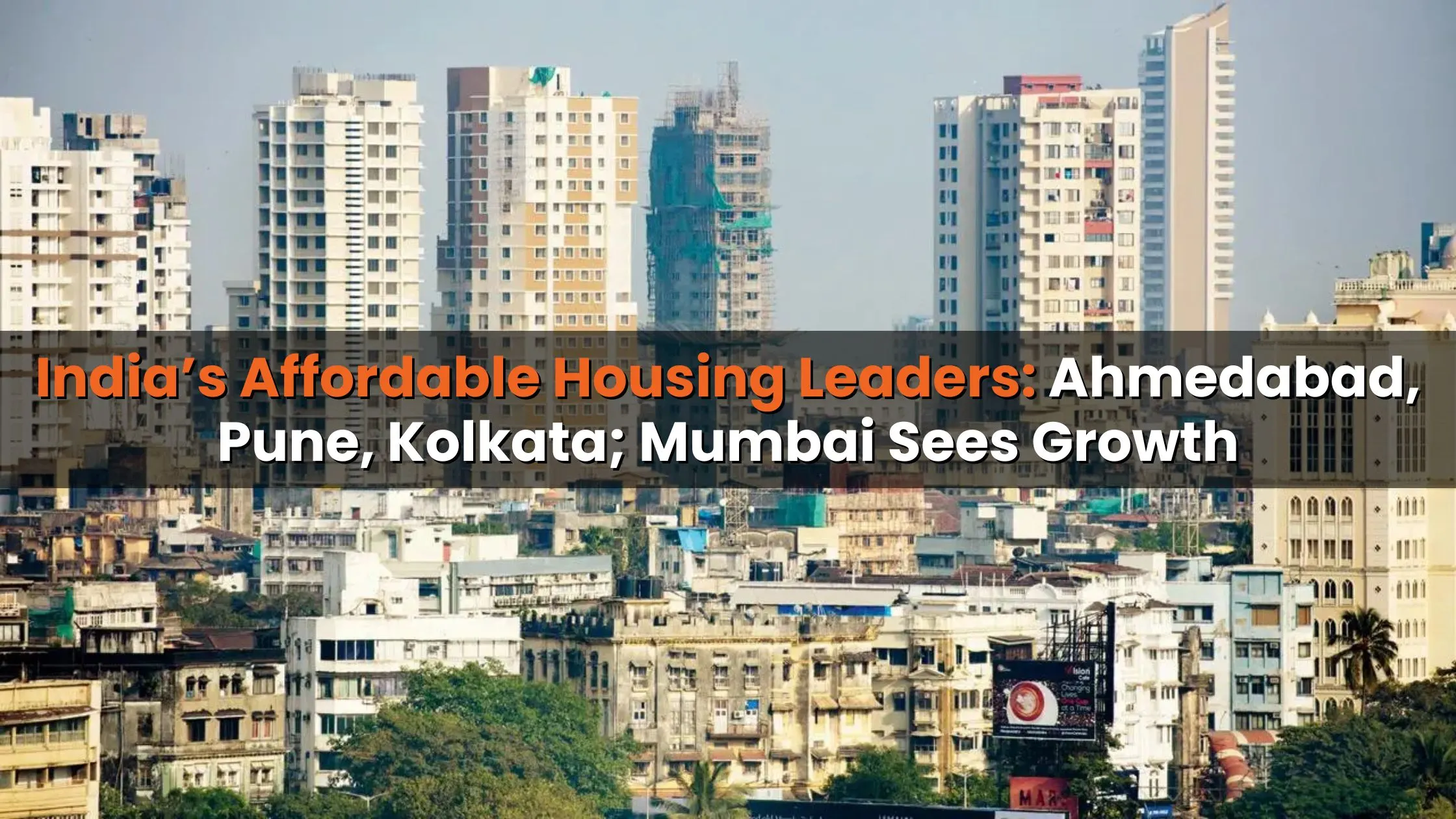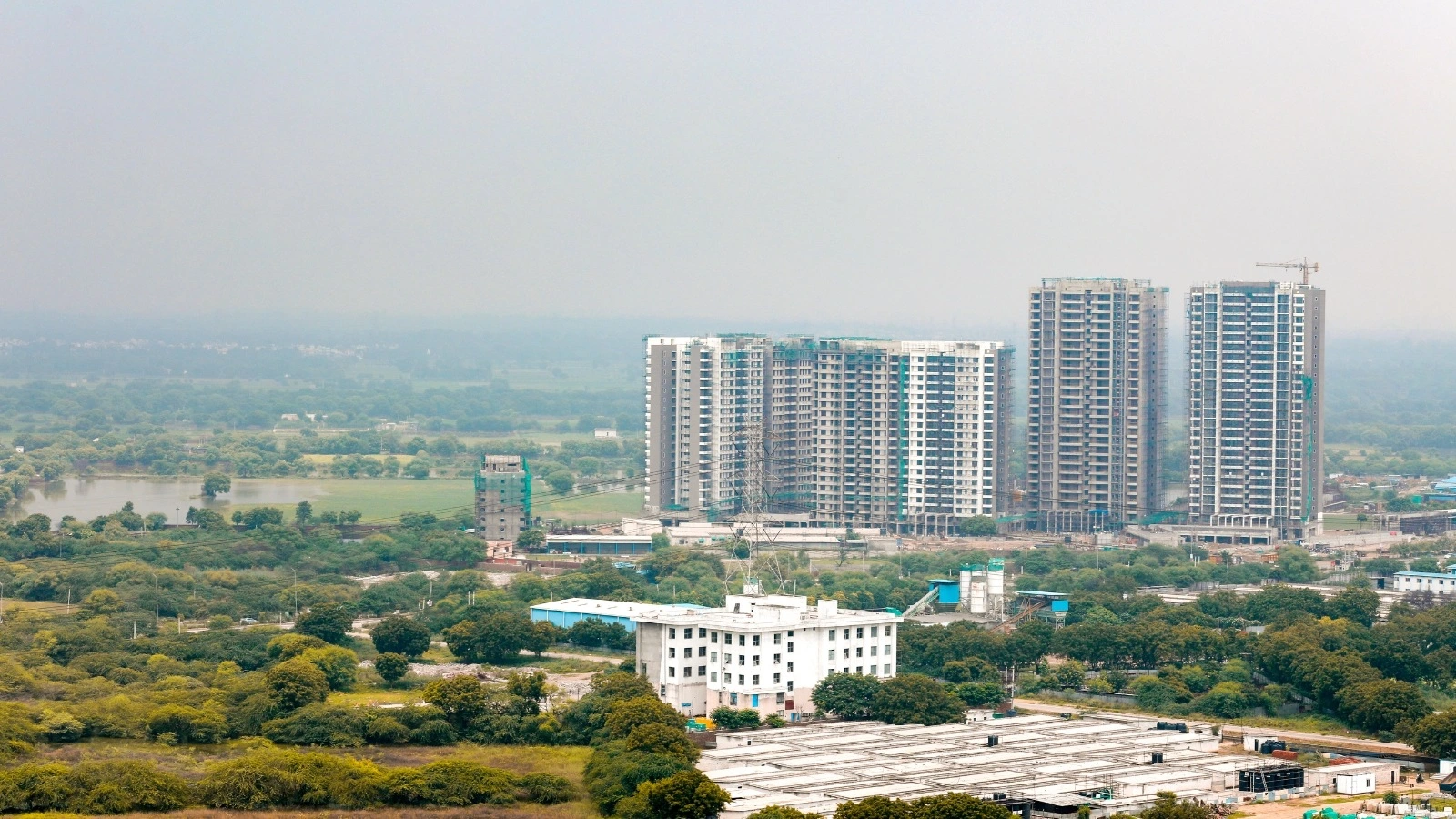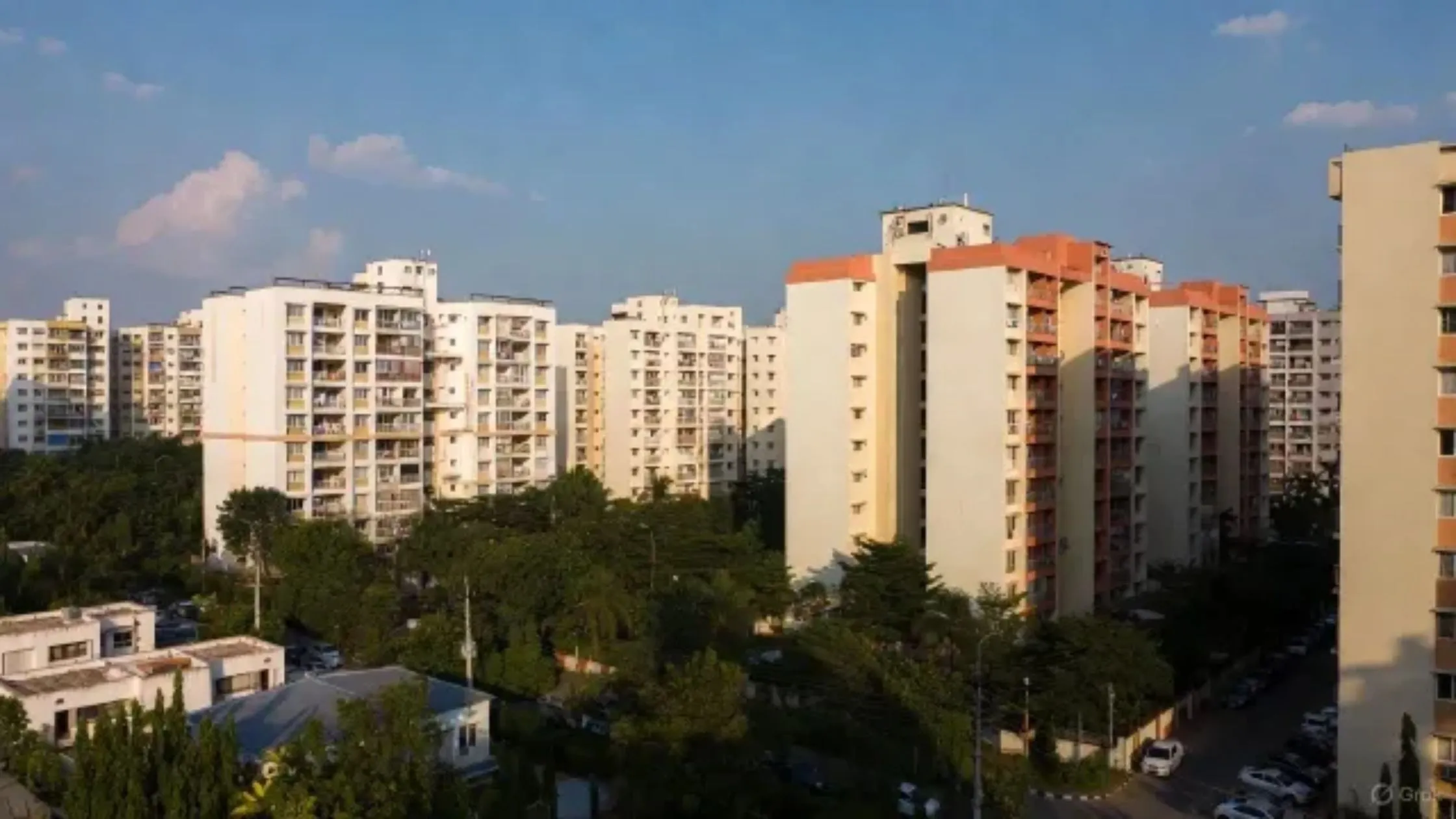Table of Content
Housing affordability is a cornerstone of urban real estate, reflecting the financial accessibility of homes for average households. In H1 2025, the Knight Frank India Affordability Index revealed that Ahmedabad, Pune, and Kolkata emerged as the top three cities for affordable housing, while Mumbai, traditionally the least affordable, showed notable improvement. This shift is largely attributed to the Reserve Bank of India’s (RBI) repo rate cuts, which have had a positive ripple effect across the nation’s real estate markets.
Understanding Housing Affordability
The Knight Frank Affordability Index measures the EMI (Equated Monthly Instalment) to income ratio, representing the percentage of household income required to fund a home loan. A city with an affordability index of 40% indicates that residents spend 40% of their income on home loan EMIs. Any ratio above 50% is considered unaffordable, as banks are less likely to underwrite loans beyond this threshold. This index serves as a critical tool for assessing market accessibility and gauging demand trends.
Also Read: Housing Sales and Supply Dip in Mumbai, Thane, Navi Mumbai, and Pune in Q2 2025
Ahmedabad, Pune, and Kolkata: Leaders in Affordability
Ahmedabad: A Model of Affordability
With an affordability ratio of 18%, Ahmedabad tops the list as India’s most affordable housing market. The city’s steady real estate prices, combined with robust income growth and reasonable home loan rates, have made it a prime destination for prospective homebuyers.
Pune: Balancing Growth with Accessibility
Pune ranks second with a 22% affordability ratio. Known for its balanced real estate market and burgeoning IT sector, Pune has effectively managed housing prices despite its rapid urbanization. This stability continues to attract both first-time buyers and investors.
Kolkata: Stability in Real Estate
With a 23% affordability ratio, Kolkata takes the third spot. The city’s stable market conditions, coupled with minimal price volatility, ensure that housing remains within reach for its residents. Kolkata’s consistent focus on affordable housing projects has also played a key role.
Mumbai’s Promising Progress
Mumbai has long been India’s least affordable housing market, with affordability ratios consistently exceeding 50%. However, 2025 marked a turning point as the city’s ratio dropped to 48%, falling below the critical threshold for the first time. This improvement is attributed to the RBI’s interest rate cuts and a gradual market correction. The lower cost of home loans has made housing slightly more accessible, signaling a positive trend for prospective buyers in Mumbai’s competitive market.
NCR: Affordability Faces Challenges
While most cities benefited from improved affordability, the National Capital Region (NCR) experienced a slight decline. The affordability ratio rose from 27% in 2023 to 28% in 2025. This dip is linked to a significant rise in housing prices, which offset the advantages of reduced interest rates. The NCR’s affordability challenges highlight the complexities of balancing price growth with market accessibility.
Impact of RBI’s Repo Rate Cuts
The RBI’s monetary policy has been a key driver of improved housing affordability. The repo rate, which influences home loan interest rates, saw a cumulative reduction of 100 basis points in H1 2025. This move, following a series of hikes to combat inflation, has eased the financial burden on homebuyers. With economic growth projected at 6.5% for FY 2026, the favorable interest rate environment is expected to sustain demand and support affordability in the coming months.
Also Read: Housing Sales Decline by 19% Across Nine Cities; Supply Falls by 30% – Mumbai Leads the Downturn
The Future of Housing Affordability
Looking ahead, housing affordability is likely to remain a vital factor in shaping real estate demand. While cities like Ahmedabad, Pune, and Kolkata are poised to maintain their leadership in affordability, emerging challenges such as inflation and rising property prices could test this stability. On the other hand, Mumbai’s recent improvements signal a promising shift that may inspire similar progress in other high-cost markets.
Conclusion
The state of housing affordability in India is a testament to the interplay of market forces, economic policies, and urban development. Ahmedabad, Pune, and Kolkata have set benchmarks for accessible housing, while Mumbai’s progress highlights the potential for transformation in even the most challenging markets. As affordability continues to influence homebuyer decisions, sustained efforts to balance growth with accessibility will be critical in ensuring a stable and inclusive real estate landscape.
Follow AquireAcers Whatsapp Channel to Stay Updated With The Latest Real Estate News





_1765522271.webp)

Ans 1. The Knight Frank Affordability Index calculates the EMI-to-income ratio, indicating the percentage of a household's income spent on home loan EMIs. A city with an index above 50% is considered unaffordable, as banks are less likely to approve loans that demand such high income allocation.
Ans 2. Ahmedabad, Pune, and Kolkata were the top three affordable cities according to the Knight Frank Affordability Index, with affordability ratios of 18%, 22%, and 23%, respectively.
Ans 3. Ahmedabad achieved this status due to its stable real estate prices, strong income growth, and reasonable home loan interest rates, making housing more accessible for its residents.
Ans 4. Pune's thriving IT sector and balanced real estate market have kept housing prices stable despite rapid urbanization. Its 22% affordability ratio reflects its ability to attract first-time buyers and investors alike.
Ans 5. Kolkata benefits from stable market conditions and low price volatility. Its consistent focus on affordable housing projects has further ensured housing remains within reach for residents.
Ans 6. Mumbai’s affordability ratio improved to 48% in H1 2025, dropping below the critical 50% threshold for the first time. This progress is primarily due to the Reserve Bank of India’s (RBI) repo rate cuts and market corrections, which have made housing loans more affordable.
Ans 7. The National Capital Region (NCR) saw its affordability ratio rise from 27% in 2023 to 28% in 2025 due to significant increases in housing prices. This price growth offset the benefits of reduced interest rates, presenting challenges for affordability in the region.
Ans 8. The RBI reduced the repo rate by 100 basis points in H1 2025, directly lowering home loan interest rates. This eased the financial burden on homebuyers, enabling improved affordability across many cities.
Ans 9. Rising property prices and inflation could challenge the stability of affordability in cities. Additionally, the demand for housing in urban centers may exert upward pressure on prices, potentially offsetting the benefits of low interest rates.
Ans 10. Affordability plays a critical role in shaping buyer decisions. Cities with lower affordability ratios attract more homebuyers and investors, while high-cost markets may deter purchases.